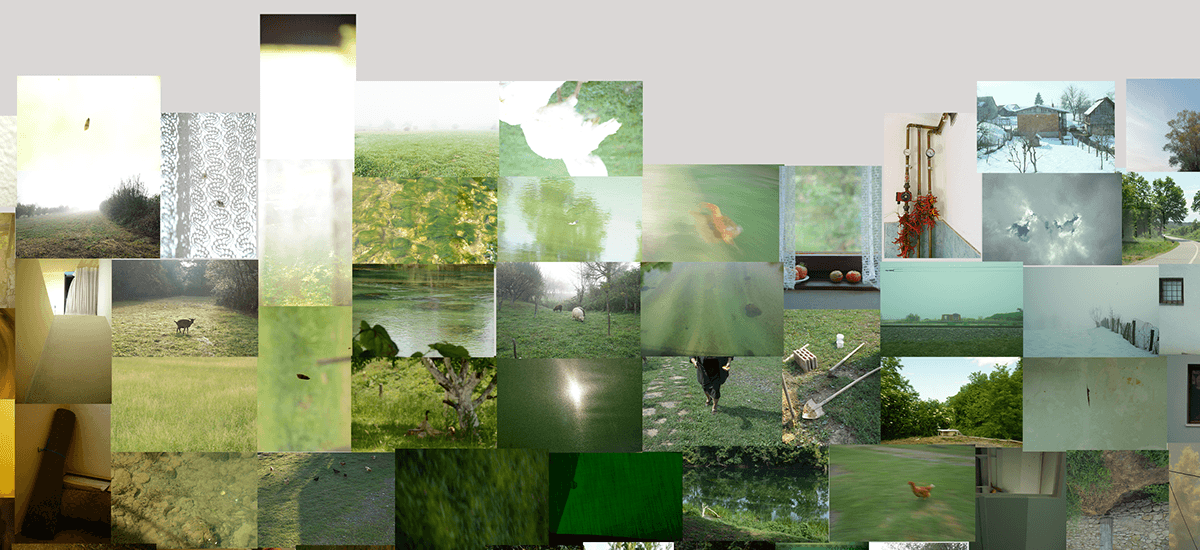Master thesis "UNA"

The observer of memories becomes so when experiencing someone else's experience for the first time. Stepping into someone's skin, wearing someone else's shoes, means seeing the world through different eyes and feeling another self. That's how empathy is said to be developed. However, observation couldn't be the same as stepping out of one's own skin into someone else's. Observation takes place at a distance, passively, while the act of "experiencing" seems active and necessarily close. Still, listening has the effect of creating that paradoxical situation in which the listener transforms into an active observer who experiences the story. The conveyed content, tone, ambiance, and scent gradually merge into a unique picture, integrating into the listener's internal memory store. Thus, the narrated experience is preserved from oblivion and once again confirms humanity's struggle for endurance.
Observation in its central state allows for simultaneous distance and closeness to the observed subject or object. Therefore, observing memories from the center of the scale would appear as a gray area that sometimes feels warm and sometimes cold. Because what is memory? According to the dictionary, memory is the reappearance in consciousness of earlier experiences with the knowledge that they have already been in consciousness and when they first appeared in consciousness. The dictionary also adds that we should also consider remembering: Remembering is the collection of everything that was once the content of our consciousness and that we can recall into consciousness whenever we want, that is, remembering is the ability by which this is done. Memory is remembering, recollection, reminding; the ability to repeat earlier experiences in consciousness; the collection of everything that is remembered, about which there is a memory. My question is: What is it that appears in consciousness and what is it that we summon into consciousness? It seems that memory is much more than the ability to summon something into consciousness. Perhaps that ability is one part of memory, but if we agree that we are woven from memories, we will understand that it is much more than just an ability. The task of this research is to gradually find a potential answer to the questions posed.
UNA is a compilation of photographs made from 2018-2023 around the river Una. It’s intention emerged from investigating the impact that a name can have on the person. Personal history, family history, contemplations and explorations of the complexity of the past formed a unique methodology of this work. These snapshots are an active exploration of the past, made while following the stories of my grandparents. Details, animals, general mood or just colors metaphorically speak about the abyss we recognize as our past. Individual memories are like tiny pieces of a big puzzle that form collective memory or an image of the past as it was.
They named me Una after the river Una, which separates the territory of Banija region in today's Republic of Croatia and the territory of Republika Srpska in Bosnia and Herzegovina. Historical complications managed to bypass the river, so it "belongs" to both sides, as well as to a third party. Legend has it that Roman soldiers gave it its present name when they reached its shores, astonished by the wonder of unknown waters, they called it Una, meaning one and only. And since then, it has kept its name. According to the Latin dictionary, "una" means simultaneously, together, united. The basis of the concept of Una could thus be explained - Una unifies. Una meant home in the past; at one point, it ceased to be a home and became a symbol of remembering home. For this reason, my parents together created a new home around their first child, whom they named Una, far from the Una river.
In mosaic art, every piece with its shade of color has its place in the grand picture, where even the smallest change can disrupt the harmony of the whole. Similarly, the selection of photographs was a process that continued until the very end of the work: the final picture required constant rearranging, fitting, and adjusting. A color gradient emerged from warm to cool tones, with green at its center - it became the main determinant of the "movement" of the photographs. Just as with individual experiences and memories, the photographs were initially stored in a storage space, arranged chronologically as they were taken. Through processing, i.e., their sorting and categorization, they gained clearer definitions and directions: all the orange, dark, and warm photographs were placed in one spot, the cooler yellows followed, leading to warm greens, then merging with cool greens into blues, and finally, completely cool blues blending into blackness. Beneath each group, another layer of hues was added: photographs belonging to the "brown," "golden," and "gray" groups gradually followed the upper course toward cool-lavender, blue-gray, and entirely dark gray. Fragments were processed as they likely would be in the mosaic creation process - only as much as necessary to blend with other photographs. The only criterion set was that all photographs should be the same size. Thus, the Una gradient gradually emerged.






